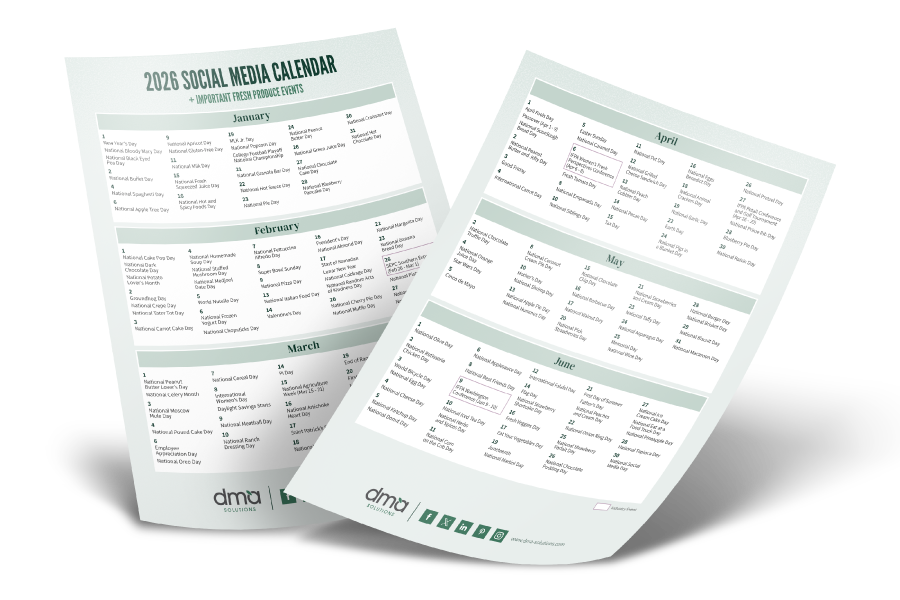As marketers, we know how critical social media is for fresh produce brands, and we also know that selling its value to those who approve budgets isn’t always an easy task. If you are a marketing professional fighting to prove the need for social media to your C-Suite, here is one way to approach explaining the value that social media can generate for your brand.
First, Start with the Basics.
When someone has never used Facebook, Instagram, or any other social platform for business purposes, they are likely to immediately question exactly how this can be done. While this certainly will not be the case for everyone in the C-Suite, many of your executives will only have dabbled in social media for personal use, or may only know about social media second-hand, through conversations amongst family and friends. Before anyone could adequately assess the specifics of a social media strategy you pitch, they must first have adequate knowledge about the world of social. Teach them the basics so that they can begin to see social media the way you do: a great tool for advancing your brand’s marketing objectives. Knowing that this conversation may be necessary, prepare a deck of information that highlights the capabilities of social media for business—this is where you get to draw your executive team in and convince them to start dreaming a little bigger where social is concerned.
Demonstrate How Social Media Complements Existing Strategy.
After the basics have been covered, it’s time to delve into how social media aligns with the larger marketing picture. If your execs have already approved a digital marketing budget for a website and inbound marketing, this is a great opportunity to showcase how social media complements these efforts. For example: if your C-Suite is wondering exactly how you can build your database with audiences in specific target markets, explain that it does not get much easier than using social media to do so. Tie this back to your presentation on social basics, elaborating on the fact that social media allows you to target specific audiences based on locations, age, and interests. Perhaps your brand is looking to target millennials or Gen-Z, for instance. The top way to target audiences is to “meet them where they are,” which, for millennials and Gen-Z, is likely on social media.
Be Strategic—Start With Established Goals and Work Backwards.
It also is important to be strategic when recommending which social platforms your brand should be present on. Make sure you are familiar with the details of your brand’s goals (and what pain point these goals are designed to eliminate) and then determine which platforms make the most sense to reach those goals in an efficient, cost-effective manner. For example: if your brand is aiming to target specific demographics to grow your database of contacts, Facebook may be your best bet, while if your company wants to focus on customer service, a Twitter presence is highly recommended too. By thinking through desired long-term results and proposed strategy before presenting your budget ask to your C-Suite, you are much more likely to come to a mutual understanding of the fact that 1.) social media absolutely can help meet your brand’s goals, and 2.) …you need the budget (and team!) to make this fact a reality for your business.
The Main Point That Needs to Be Shared Is…
It is important to note that social media is a tactic no different than a trade show booth at an industry event. Much like a booth where brands are meeting buyers where they are present, social media allows brands the opportunity to meet consumers where they are: online.
Have you struggled with justifying the value of social media and getting the budget you need to be effective on social? Tell us more about your experience in the comments below, or reach out to us on Twitter at @TheCoreBlog.
Other Helpful Articles on Social Media
- Impressions vs. Engagement: Which is More Important?
- How Social Media Can Be Your Best Media Relations Tool
- How Social Media Can Be Your Best Customer Service Tool
- The Beginner’s Guide to Social Media Marketing
- Stats That Prove: Social Media Edition
- Social Media Promotions Checklist
{{cta(‘6461b1d7-bf8b-4ab4-a0c8-aba6bfbb67c2’)}}

